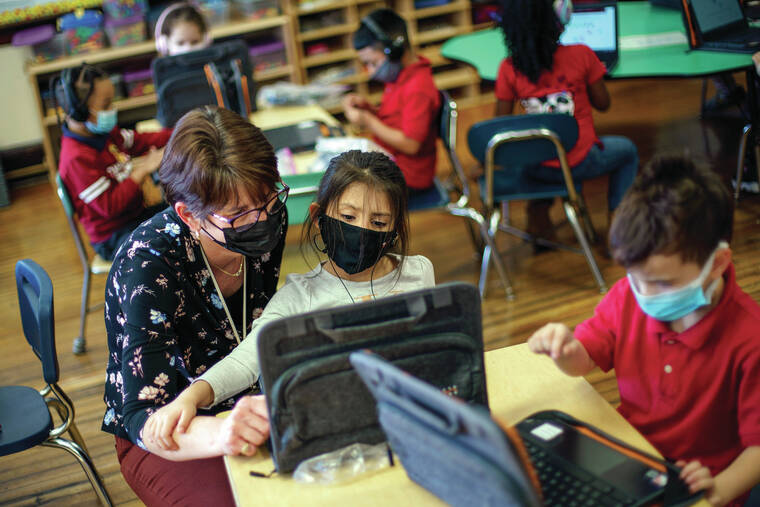Some schools hit hard by virus make few changes for new year
As a new school year approaches, COVID-19 infections are again on the rise, fueled by highly transmissible variants, filling families with dread. They fear the return of a pandemic scourge: outbreaks that sideline large numbers of teachers, close school buildings and force students back into remote learning.
Some school systems around the country have moved to bolster staffing to minimize disruptions, but many are hoping for the best without doing much else differently compared with last year.
ADVERTISING
Even some of the districts that had the most disruptions to in-person schooling amid the spread of the highly contagious omicron variant point to few specific changes in their prevention efforts.
Among them is Baltimore County schools, where the number of days that individual schools in the district couldn’t offer in-person learning added together totaled 159 in January, according to data from the private research firm Burbio, which tracks over 5,000 school districts nationwide. District officials said they did not see a need to change protocols.
“We don’t anticipate significant changes to our plan; we don’t anticipate significant disruptions,” said Charles Herndon, a Baltimore County Public Schools spokesperson. “What we’re expecting to see is waves of COVID in 2022 and 2023, and I’m sure there are going to be times when more folks are going to be absent and there will be times when everything is OK.”
Still, the district is prepared to move classes online if necessary.
“We certainly hope we don’t have to go to that extreme, but it is an option should we need to consider it,” he said.
Teacher shortages remain a major concern, even bigger than COVID-19 itself, said Dan Domenech, executive director of AASA, an association of school superintendents.
“That is the greater concern – that they will have the necessary staff to man all the classrooms, to man all the programs – which will only be made worse if there is an outbreak of COVID,” he said.
Philadelphia’s schools illustrate how disruptive surges can be. Beginning in January the virus caused 114 city schools to go remote for an average of around eight days each — a total of 920 cumulative days of remote learning, more than any other district in Burbio’s data for January through June.
Amid shortages of substitute teachers, schools were forced to pull in central office staff, combine classrooms, or temporarily go remote, district spokesperson Marissa Orbanek said.
The district has switched to a new staffing agency and aims to fill 90% of substitute requests this year, said Orbanek. They also now have over 100 supplemental teachers, substitutes who show up at the same school every day in case of last-minute absences.


